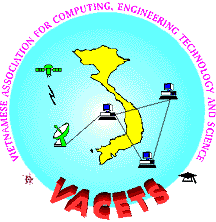The long-haul
trucking companies and metropolitan area fleets are making increasing use
of automatic vehicle location (AVL) systems for fleet management. Some
AVL systems in use today rely on the Global Positioning System (GPS) for
location, whereas others use communication satellites or land-based networks
to compute location. The definition of AVL will become clearer with the
following descriptions of some principal AVL systems, that are currently
operational or will be available shortly:
OmniTRACS
mobile satellite communications system is the largest AVL worldwide. It
provides real-time, two-way communications between the carriers and their
trucks in transit. OmniTRACS supplies precise vehicle location reports
and trailer monitoring information automatically. >From the keyboard
unit in the cab, the drivers can contact their home offices from any place
and at any time. The carriers (headquarters) may inform their drivers of
any urgent instructions. This two-way communications allows greater flexibility
to divert shipments for pick-ups or drop-offs along the way. Since 1988,
some 250 fleet operators have installed OmniTRACS on a total of 65,000
long-haul trucks. OmniTRACS computes position by measuring the round trip
delay of synchronized transmissions from two geostationary satellites separated
by 12-24 degrees. The network management at the OmniTRACS hub computes
the range of each satellite and derives the third measurement needed for
position from a topographic model of the earth. Accuracy is typically one-quarter
mile, which is more than adequate for long-haul trucking requirement. OmniTRACS
terminals sell for $3,500-$4,000, and monthly subscription fees average
about $70 per vehicle.
American Mobile
Satellite Corporation (AMSC) AVL system uses GPS for location and INMARSAT-C
service for data communications. AMSC customer vehicles are equipped with
Trimble Galaxy Standard-C/GPS terminals, which cost less than $2,000. Typical
monthly usage charge for fleet customers is $50-$70 per vehicle. When AMSC
launches its own satellite (planning in late 1994), which will support
both voice and data communications, the terminals will be redesigned to
support interface to cellular network also.
In the 1970s,
FCC established interim rules under which licenses to operate in the 902-928
MHz band, sometimes referred to as the AVM (automatic vehicle monitoring)
band, would be granted to companies for the operation of vehicle- tracking
systems in metropolitan areas. PacTel Teletrac is the largest AVL system
using this technology. It provides vehicle location and messaging services
to 800 metropolitan area fleets operating some 25,000 vehicles. Teletrac
is a network of transmitting and receiving antennas installed around the
metropolitan area. Teletrac uses time of arrival measurements on received
signals from four or more antennas to compute a vehicle's location with
an accuracy of about 100 feet. Teletrac transceivers are priced around
$400, and the monthly subscription charge averages about $20 per vehicle.
Several companies
are promoting the use of the cellular network for computing location. KSI
Inc. has developed a technique that measures the angle of arrival at multiple
cell sites of cellular phone control channel transmissions. A phone's (vehicle's)
location is computed as the intersection of the observed angles, with typical
accuracy of 150 feet or better. KSI's system requires no modification to
the cellular phone but does require an overlay to the existing cellular
network. Another company, TrackMobile, has developed a technique for computing
location by measuring the signal strength of transmissions from multiple
cell sites and using these measurements to derive the ranges to the sites.
Accuracy is claimed to be 100-1000 feet.
Another interesting
system is the Terrapin Corporation's PINS (Position Information Navigation
Subsystem). PINS computes a vehicle's location by tracking the pilot tone
from existing commercial FM radio transmitters. PINS measures the phase
of the signal and derives the range to the transmitter, the location of
which is known. Four or more FM stations are tracked by the PINS receivers,
which use multilateration to compute the vehicle's location with an accuracy
of 10-20 meters. To get and maintain this accuracy, Terrapin installs a
fixed observer in each metropolitan area, which operates in much the same
way as a differential GPS reference station. The fixed observer computes
the frequency drift of the FM signals and transmits the data to the receivers.
The FM subcarrier that transmits the fixed observer data can also transmits
traffic information, road conditions, and other broadcast data.
There are
many more AVL systems than are described here. It is sufficient to say
that the use of vehicle location by commercial fleets is expected to grow
significant over the next several years. GPS will be widely used as a source
of accurate location data, but other systems will also be used as well.
Many of these systems and technologies will be adopted for IVHS-related
(Intelligent Vehicle Highway Systems) consumer services. Then, we will
be looking at a market of many order of magnitude bigger.
Viet-Dung
Hoang, Ph.D.
[email protected]
For
discussion on this column, join [email protected]
Copyright
© 1994 - 1997 by VACETS and Viet-Dung Hoang
:
